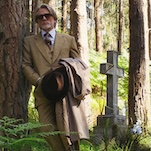New Orleans: St. Louis Cemetery - Set of Easy Rider's acid freak-out
Derived from Greek, the word “necropolis” means “city of the dead,” and few places make the word seem appropriate quite like New Orleans’ above-ground cemeteries. The city’s position in relation to sea level makes it hard to bury the dead, making these types of cemeteries necessary. And, as often happens, necessity gave rise to art. St. Louis Cemetery #1 is the city’s oldest burial spot. It’s lined with monuments that date back centuries, and which exist in various stages of upkeep, from the brand new and well-preserved to graves crumbling into deep disrepair. The tight quarters, disorienting passageways, and intricate, sometimes eerie, religious sculptures give it an atmosphere unlike any other place on Earth.









































